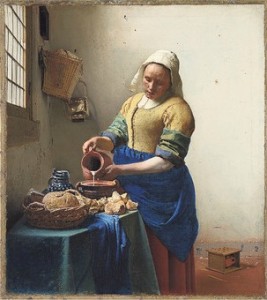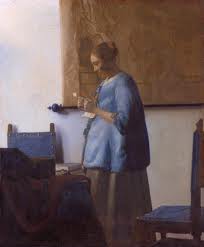 Today’s Wall Street Journal carried a review of the renovated Rijksmuseum in Amsterdam, which reopens to the public on Saturday. It’s pretty much a rave, and I recommend it. But I found one passage extremely interesting and worthy of singling out and commenting on.
Today’s Wall Street Journal carried a review of the renovated Rijksmuseum in Amsterdam, which reopens to the public on Saturday. It’s pretty much a rave, and I recommend it. But I found one passage extremely interesting and worthy of singling out and commenting on.
First, here’s the setup passage:
The museum’s director of collections, Taco Dibbits, and his curatorial staff have completely restructured the installation of the museum’s holdings for the renovated building, arranging 8,000 objects from the museum’s permanent collection (an increase of about 40% in the total number of objects displayed) across 80 galleries, 30 of which are devoted to 17th-century Dutch art—the so-called Golden Age. …
…Prior to the renovations, exhibits were organized according to department, with paintings, sculptures and applied arts completely segregated. But now, as is increasingly common in museums, a more chronological approach prevails, so that varied objects from a given era can be shown in tandem to give a sense of the period—fine art, for instance, may be seen alongside furniture, craft items or even machinery—beginning with the Middle Ages on the lower floors and culminating with the 20th century under the eaves of the tower galleries…
And now the important part:
Traditionalists will feel perfectly at home in the Gallery of Honor, where the greatest masterpieces of the Rijksmuseum’s 17th-century Dutch paintings collection—many of which, including Vermeer’s famed “Woman in Blue Reading a Letter” (1663-64) [at left], have recently been cleaned or restored—can be enjoyed in perfect tranquility, blissfully free from the video screens and iPad displays that have become the bane of modern museum-going. Vermeer’s “Milkmaid” (c. 1660) [above right] is not shown beside an earthenware jug, nor is Rembrandt’s “The Jewish Bride” (1667) hung beneath a wedding canopy. But elsewhere in the museum, an eclectic and at times whimsical approach does help to enliven the display by providing a rich context for less familiar works.
 Now that says something to me. It signifies that some works of art — the very best — need no technology, no bells and whistles, to serve as explication. The Journal’s reviewer, Jonathan Lopez, endorses the museum’s bells and whistles, saying:
Now that says something to me. It signifies that some works of art — the very best — need no technology, no bells and whistles, to serve as explication. The Journal’s reviewer, Jonathan Lopez, endorses the museum’s bells and whistles, saying:
…For instance, a formidable military portrait of the Dutch naval hero Adm. Michiel de Ruyter hangs alongside plundered treasure—gold coins, mighty cannons, a carved bowsprit— that he wrested from Spanish ships in battle. Exhibits of this type not only help to fulfill the Rijksmuseum’s dual art and history mandate, but based on my own observations of how things worked in the Philips wing, they seem to be particularly effective in engaging the interest of children—a shrewd strategy.
But to me, the lack of helping aids in the Gallery of Honor speaks volumes — which is that the greatest works of art, works by the true masters, speak for themselves. The rest need help. Whether or not the curators intended it, they have tipped their hand on this question.
